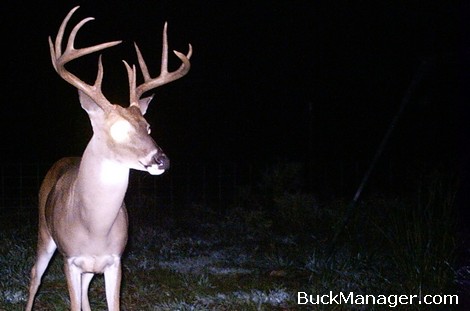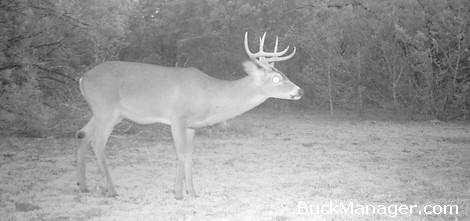Many whitetail hunters are interested in scoring bucks on the hoof. Without a doubt, one of the most common questions I hear as hunting season approaches is, “What will this buck score?” I think it’s just a sign of the times. People want to measure everything now days. And most hunters are people; people interested in managing and hunter better bucks.
From a deer hunting standpoint, the score of a buck’s antlers is not the most important thing. However, it is one of many good ways to track the progress of a deer management program. Estimating the gross score of a buck’s antlers without the deer in hand can be accomplished in one of two ways, either using game camera photos or actually looking at the live deer in the field.

Most prefer to look at game camera photos because it offers a hunter all the time in the world to look a buck from many different angles. A hunter can check out the left side, the right side, the front view, basically everything you’d need to make a good guesstimate of the deer’s gross Boone and Crockett score.
Estimate Buck Score
A buck’s antler score is made up of quite a few measurements. Every set of antlers will have at least 11 measurements that relate to the beams of the deer. These include 8 beam circumference (mass) measurements, 2 beam length measurements and another measurement between the main beams (greatest inside spread). The remainder of a buck’s antler score is simply the length of each of his antler points.
More points and longer point lengths equates to a higher total score. An 8 point buck with very heavy antlers and long points can score the same or more as a 12 point buck with thin antlers and short points. And in my opinion, although there are many factors involved, the tine lengths of buck are usually the most important factor when it comes to racking up really large scores.
But what is the best way to score a buck from a photo or in the field? Fortunately, as explained above, antler score can be grouped into a handful of measurements: mass, beams, spread and point length.
Quick Scoring of Deer in the Field
Like most things, getting good at scoring deer takes experience, practice, and more experience. For me, the best way to relate antler score to what was observed was for me to see the deer, either from a photo or in the field, and then be able to physically measure the antlers in my hands.
After repeating this a few times, I was able to calibrate my mind, so to speak, and put the image that I was seeing into inches. It was then that I could see a 4 inch base (H1), a 5 1/2 inch brow tine (G1) and a 10 inch G2 on a live deer.
This happened because there was a relationship between past observations that I had seen and the physical measurements that I had made. Those proportions could then be applied and adjusted to fit other bucks in the future.

Estimating Buck Antler Score Takes Practice
It will not happen overnight. Even with some experience and a lot of practice it takes time to get proficient at scoring bucks on the hoof. The best tip I can give to help score deer is to combine the 8 mass measurements, 2 beam measurements and inside spread measurement into a single number I refer to as the “base score.”
To estimate the base score for bucks found in your area, simply use the base score for bucks that you have previously harvested. For example, mature bucks (5 1/2+ years old) on a property I used to hunt typically had mass measurements that totaled about 30 inches, main beams that were about 20 inches (remember there are two beams), and an inside spread around 17 inches.
To estimate the gross Boone and Crockett score of a mature whitetail buck on that ranch from a photo or in the field all I had to do was start with 87 inches and perform some mental math to add up the length of each of the antler points. This would allow me or any other hunter the place to score a mature buck in the field in well under a minute.
The base score could be adjusted rapidly and on-the-fly, allowing one to deduct a few inches for a deer with thinner-than-average mass (base score 85) or add several inches (base score 90) for a wider-than-normal buck. Measure or estimate the base score for middle-aged and mature bucks in your area and that will give you a great starting point for scoring deer this hunting season.
Buck Score + Aging Deer of the Hoof
Scoring bucks on the hoof and in the field is important, but not nearly as important as aging deer on the hoof. For hunters and landowners that want to improve the quality of the white-tailed deer found and harvested on their property it’s important to let bucks reach their full genetic potential.
Bucks can not do that if they get shot at 3 1/2 years of age, even if they do have 130 inches of antler. That said, each property has it’s own challenges when it comes to deer management and buck age structure. A “shooter buck” on one property may be a 6 1/2 year old but a 4 1/2 year old deer on another. There are a number of factors that contribute to an individual property’s deer management program.
The scores of the bucks taken from a property in a given year can be a good physical indicator of herd health, but so can body weights. If the goal is to produce mature bucks for harvest—a great goal in itself—then correctly aging deer in the field will be much more important than a buck’s antler score, but hopefully the tips provided here will help you do so.